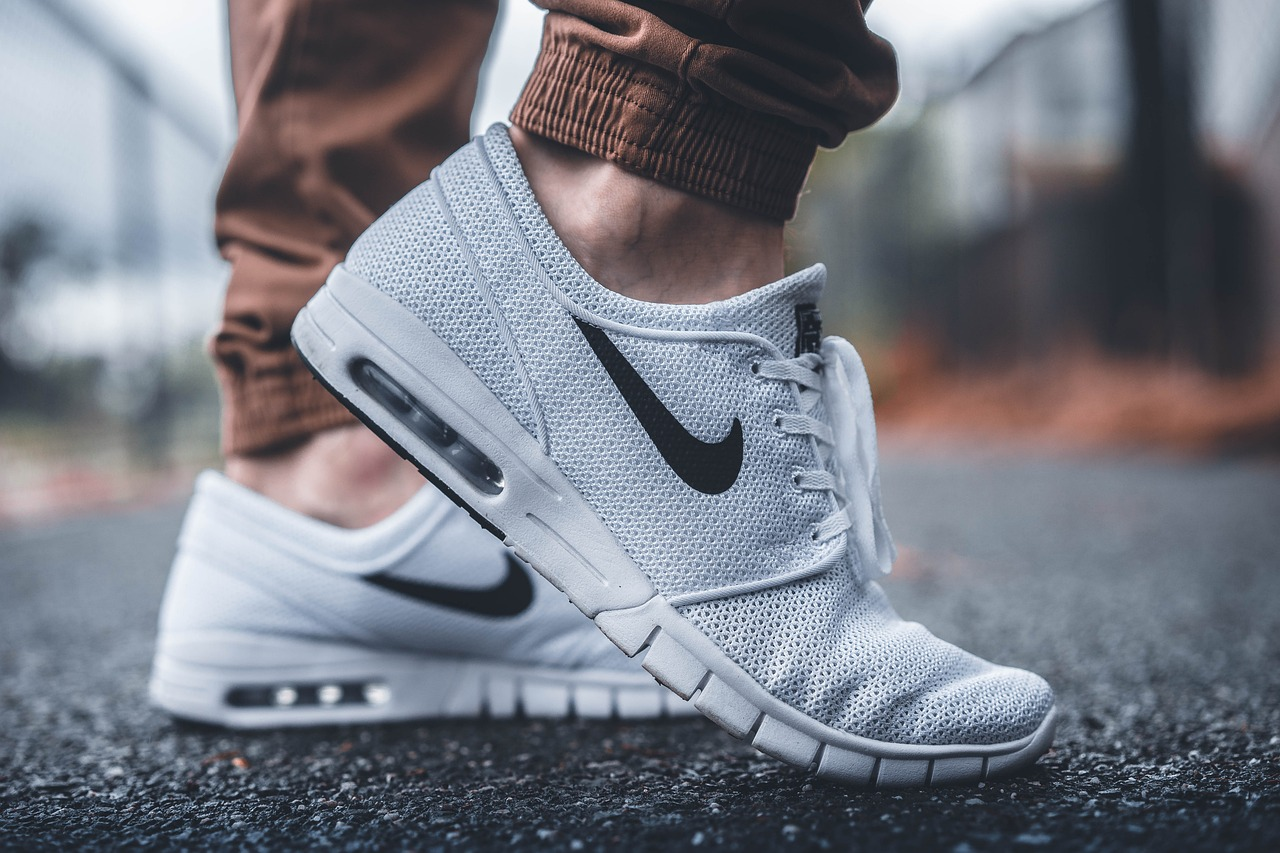
What are Brand Archetypes
In the vast world of branding, archetypes play a significant role in shaping the personality and perception of a brand. But what exactly are brand archetypes? Simply put, they are universal characters or personas that tap into the collective unconscious of consumers, evoking specific emotions, values, and desires. These archetypes provide a powerful framework for creating compelling brand stories and establishing deep connections with your target audience.
The Power of Archetypes in Branding
Archetypes possess an inherent power to resonate with people on a subconscious level. They embody timeless traits, symbols, and narratives that have been ingrained in human culture for centuries. By aligning your brand with a specific archetype, you tap into the deep-rooted human psyche, which triggers emotional responses and creates a sense of familiarity and trust. This connection has the potential to influence consumer behaviour, foster brand loyalty, and differentiate your business in a crowded marketplace.
Why Archetypes Matter

Archetypes provide a strategic framework that helps businesses develop a consistent brand identity, communicate effectively, and forge long-lasting relationships with customers. They guide the tone, messaging, visual aesthetics, and overall brand experience. Understanding and harnessing the power of archetypes can give your brand a distinct personality, making it more memorable, relatable, and impactful.
Archetypes in Marketing and Branding
In the realm of marketing and branding, archetypes offer a powerful tool for creating meaningful narratives, shaping brand personalities, and standing out in a competitive landscape. By leveraging archetypes, brands can tap into the deep-seated desires and aspirations of consumers, effectively communicating their values, and building strong emotional bonds.
The 12 Classic Brand Archetypes
The Innocent:
The Innocent archetype embodies brands that evoke purity, simplicity, and a belief in the goodness of the world. These brands often have a nostalgic and optimistic appeal, capturing a sense of childlike wonder and joy. Their brand voice is gentle, reassuring, and compassionate, emphasizing the importance of innocence and maintaining a positive outlook.
The Innocent archetype encourages consumers to embrace simplicity, trust in the inherent goodness of humanity, and find happiness in life’s small pleasures. Brands embodying the Innocent archetype, such as Coca-Cola, create a brand experience that evokes feelings of warmth, authenticity, and a sense of belonging.

The Explorer:
The Explorer archetype represents brands that embody a spirit of adventure, curiosity, and a thirst for discovery. These brands inspire individuals to break free from the ordinary and explore new territories, both physically and metaphorically. The brand strategy for the Explorer archetype revolves around positioning the brand as a catalyst for exploration and personal growth. These brands encourage consumers to embrace their inner explorers, seek new experiences, and push boundaries.
One key aspect of the brand strategy for Explorer brands is to create a sense of excitement and anticipation. They can achieve this through captivating storytelling, showcasing inspiring journeys, and highlighting the transformative power of exploration. By tapping into consumers’ desire for discovery, these brands can create a loyal following and an emotional connection.
Another crucial element of the brand strategy for Explorer archetypes is to provide resources, tools, and experiences that facilitate exploration. This can involve creating travel guides, adventure gear, or immersive digital platforms that enable consumers to explore and document their own journeys. By positioning themselves as experts and facilitators of exploration, these brands can build trust and become go-to sources for adventurers.
The brand voice for Explorer archetypes should be adventurous, bold, and motivational. It should inspire individuals to step out of their comfort zones, embrace the unknown, and celebrate the joy of discovery. By employing compelling visuals, captivating narratives, and a sense of wonder, brands can capture the imagination of their audience and motivate them to embark on their own exploratory journeys.
The brand strategy for the Explorer archetype centers around fostering a sense of adventure, curiosity, and personal growth. By positioning the brand as a catalyst for exploration and providing resources to support it, Explorer brands can create a distinct identity and attract a target audience seeking new experiences and a sense of adventure in their lives.
The Sage:
The Sage archetype represents brands that embody wisdom, knowledge, and expertise. These brands position themselves as trusted authorities and sources of valuable insights in their respective industries.
The brand positioning for Sage archetypes focuses on establishing credibility, thought leadership, and a reputation for providing reliable information. These brands often leverage their expertise to educate and guide consumers, positioning themselves as go-to resources for reliable advice and solutions.
The brand voice for Sage archetypes is authoritative, knowledgeable, and informative, emphasizing the brand’s commitment to sharing valuable insights and empowering their audience with wisdom. By positioning themselves as sages, these brands build trust, credibility, and become trusted advisors in their field.
The Hero:
This archetype represents brands that inspire courage, strength, and determination. These brands position themselves as catalysts for personal transformation and empower consumers to overcome challenges. The brand positioning for Hero archetypes revolves around highlighting the brand’s ability to provide solutions and lead customers to success.
By positioning themselves as heroes, these brands create a sense of trust and reliability, positioning themselves as the go-to option for individuals seeking a transformative experience. Through their products or services, Hero brands instill a sense of confidence and motivate consumers to take action, positioning themselves as the guiding force in their customers’ journeys.

The Outlaw:
The Outlaw archetype embodies rebellion, nonconformity, and the desire for freedom. Outlaws challenge societal norms and rules, advocating for change and personal liberation. They have a knack for pushing boundaries and defying authority, often becoming symbols of resistance. Outlaws are fearless, independent thinkers who inspire others to question the status quo and pursue their own paths, even if it means going against the grain.
The Magician:
The The Magician archetype represents wisdom, transformation, and the power of knowledge. Magicians possess deep insight and intuition, enabling them to perceive hidden truths and navigate the complexities of life. They have a profound understanding of the natural and spiritual realms and can channel their energy to manifest change. Magicians are skilled in alchemy, both literal and metaphorical, and bring about transformation and growth, not just for themselves, but for those around them.
The Lover:
The Lover archetype embodies passion, connection, and intimacy. Lovers are driven by a deep desire for love and unity, seeking meaningful relationships and emotional fulfillment. They are romantics at heart, valuing emotional intimacy and expressing love in various forms.
The Lover Archetype fosters harmonious connections, creating a sense of belonging and shared experiences. They celebrate sensuality and appreciate beauty, often inspiring others to embrace their own desires and embrace love in all its forms.
The Jester:
The Jester archetype embodies humour, playfulness, and spontaneity. Jesters are masters of comedy and wit, bringing laughter and levity to any situation. They have a unique ability to see the lighter side of life, even in the face of adversity.
Jesters challenge conventions and encourage others to embrace their inner child, fostering creativity and joy. They remind us not to take ourselves too seriously and to find amusement and laughter amidst life’s challenges.
The Everyman:
The Everyman archetype represents relatability, humility, and the power of the ordinary. Everymen are down-to-earth individuals who embody the common experiences and struggles of everyday people. They are relatable and approachable, often serving as a voice for the masses.
Everyman remind us of our shared humanity and the value of simple, everyday moments. They champion authenticity and represent the notion that even ordinary people can make a significant impact and bring about positive change in the world.
The Caregiver:
The Caregiver archetype is characterized by brands that prioritize the well-being of others, exhibit compassion, and focus on providing support and assistance. These brands position themselves as nurturers and advocates for their customers’ needs. The Caregiver archetype is defined by its innate tendency to care for others, fostering a sense of trust and reliability.
One example of a brand that embodies the Caregiver archetype is Johnson & Johnson. As a family company, Johnson & Johnson has built a legacy of caring for families and promoting health and well-being. Their products, ranging from baby care to healthcare solutions, cater to the needs of individuals at different stages of life. This brand exemplifies the Caregiver archetype through its commitment to safety, reliability, and nurturing.

The core desire of brands embodying the Caregiver archetype is to provide assistance and make a positive impact on the lives of others. By positioning themselves as caregivers, these brands establish a competitive advantage by cultivating a deep emotional connection with their audience. Consumers are drawn to the compassion and empathy exhibited by these brands, leading to long-term loyalty and trust.
Caregiver brands often excel in industries such as healthcare, personal care, and philanthropy, where the primary focus is on supporting and nurturing individuals. Their competitive advantage lies in their ability to address the needs of their customers with genuine care and concern.
The caregiver’s tendency to prioritize the well-being of others influences their brand strategy. These brands often engage in corporate social responsibility initiatives and philanthropy, reflecting their commitment to making a positive impact on society. They may form partnerships with charitable organizations, launch community outreach programs, and adopt sustainable practices. Such actions align with the caregiver archetype’s values and further reinforce the brand’s nurturing persona.
The competitive advantage of Caregiver brands lies in their ability to build deep emotional connections and trust with consumers. Their core desire is to make a positive impact on the lives of others, which drives their brand strategy and actions. Caregiver brands have a distinct advantage in industries where nurturing and support are valued, and their propensity to care sets them apart in the hearts and minds of consumers.
The Ruler:
The ruler archetype represents leadership, authority, and control. Rulers are confident individuals who possess a strong sense of responsibility and have a natural inclination to take charge. They excel at organizing and managing people and resources, guiding others toward a common goal.
Rulers often exhibit a commanding presence and are respected for their ability to make tough decisions. They provide stability and structure, ensuring order and progress in various domains of life, be it politics, business, or personal relationships.
The Creator:
The Creator archetype represents brands that celebrate imagination, innovation, and the power of self-expression. These brands position themselves as catalysts for creativity, empowering individuals to bring their unique ideas to life. They provide tools, resources, and platforms that foster artistic endeavors and enable consumers to unleash their creative potential
Brands like LEGO and Adobe embody the Creator archetype, inspiring creativity, encouraging experimentation, and offering products and services that fuel innovation. Their brand positioning revolves around enabling individuals to express themselves authentically, fostering a community of like-minded creators, and championing the transformative power of imagination.
How to Identify Your Brand Archetype
Self-Reflection and Brand Values
Identifying your brand archetype begins with understanding your core values, mission, and vision. Reflect on what your brand stands for, what you want to achieve, and the emotional impact you aim to create. This introspection will help uncover the archetype that aligns with your brand’s essence.

Understanding Your Target Audience
Consider the desires, aspirations, and motivations of your target audience. What resonates with them? Which archetypal traits are most likely to connect with them on an emotional level? Conduct market research, analyze consumer behavior, and gather insights to identify the archetype that will resonate with your audience.
Analyzing Brand Messaging and Imagery
Evaluate your existing brand messaging, visuals, and tone of voice. Do they align with a specific archetype? Look for consistent patterns or themes that emerge. Assess how well your current branding reflects the traits and values associated with different archetypes.
Seeking Professional Guidance
If you find it challenging to identify your brand archetype, consider consulting branding professionals or agencies experienced in archetypal branding. Their expertise can provide valuable insights and guide you in uncovering the most suitable archetype for your brand.
Read More: Types of Branding Strategies (Comprehensive Guide)
Brand Identity
Creating a Consistent Brand Personality
Once you have identified your brand archetype, it’s essential to integrate it consistently throughout your brand identity. Ensure that your messaging, visuals, and customer interactions reflect the core traits and values associated with your archetype. Consistency is key in establishing a strong brand personality.

Visualizing Your Archetype
Visual elements are powerful tools for expressing your brand archetype. Consider how colors, typography, imagery, and design choices can evoke the desired emotions and reinforce your archetype. Develop a visual style guide that aligns with the essence of your archetype, ensuring a cohesive and memorable brand identity.
Developing Brand Guidelines
Establish clear brand guidelines that reflect your archetype. Define your brand voice and tone, ensuring consistency across all communication channels. Create a set of guidelines that outline how your archetype should be portrayed in various contexts, from marketing materials to customer interactions. This will help maintain a cohesive and authentic brand image.
Examples of Successful Brands and Their Archetypes
Apple: The Creator
Apple embodies the Creator archetype by continuously innovating and pushing the boundaries of technology. Their emphasis on sleek design, user-friendly interfaces, and cutting-edge products inspires customers to embrace their own creativity.

Nike: The Hero
Nike embraces the Hero archetype, empowering athletes and individuals to overcome obstacles, strive for greatness, and unleash their full potential. Their powerful advertising campaigns and iconic slogan, “Just Do It,” resonate with the inner hero in everyone.
Harley-Davidson: The Outlaw
Harley-Davidson embraces the Outlaw archetype, representing freedom, rebellion, and the open road. Their brand image appeals to those who seek adventure, independence, and a nonconformist spirit.

Leveraging Archetypes in Marketing
Crafting Compelling Brand Stories: Use your brand archetype to create authentic and compelling brand stories that resonate with your target audience. Develop narratives that tap into the core emotions and values associated with your archetype, forging a deep connection and establishing an emotional bond.
Tailoring Communication Channels: Adapt your communication channels to align with your archetype and connect with your audience effectively. Whether it’s social media, content marketing, or traditional advertising, tailor your messaging and visuals to reflect the traits and values of your archetype.
Using Archetypes in Advertising and Campaigns: Leverage your archetype to create impactful advertising campaigns that capture attention and evoke emotions. Use storytelling, symbolism, and visual cues to communicate the essence of your archetype and connect with consumers on a profound level.
Building Emotional Connections with Consumers: A key strength of archetypes is their ability to create emotional connections. Through authentic communication, personalized experiences, and empathetic customer interactions, build emotional connections that foster brand loyalty and advocacy.
Avoiding Archetype Stereotypes and Pitfalls
Striking a Balance with Authenticity: While archetypes provide a framework, avoid falling into stereotypes. Adapt your archetype to align with the unique qualities of your brand, ensuring authenticity and originality.
Ensuring Cultural Sensitivity: Archetypes may have different connotations across cultures. Be mindful of cultural sensitivities and adapt your messaging accordingly to avoid misunderstandings or unintended offense.
Evolving Archetypes with Changing Times: Archetypes can evolve as societal values and expectations change. Stay attuned to cultural shifts and adapt your archetype, if necessary, to remain relevant and resonate with your target audience.
The Impact of Archetypes on Consumer Behavior
Creating Brand Loyalty: Archetypes have the power to cultivate strong brand loyalty. When a brand consistently embodies and communicates its archetype, it establishes a clear identity that resonates with customers. This fosters a sense of trust, familiarity, and emotional connection, encouraging repeat purchases and long-term loyalty.

Influencing Purchase Decisions: A Brand archetype taps into consumers’ emotions and desires, influencing their purchase decisions. By aligning with a specific archetype, brands can create a sense of aspiration, belonging, or empowerment, compelling consumers to choose their products or services over competitors’.
Building Brand Trust and Recognition: Consistency in portraying the brand archetype builds trust and recognition among consumers. When a brand consistently embodies the values and traits associated with its archetype, it becomes more memorable and trustworthy. This can lead to increased brand awareness, positive word-of-mouth, and a favorable reputation.
Evolving and Refreshing Your Brand Archetype
Rebranding and Archetype Shifts: Over time, brands may need to evolve and adapt their archetypes to stay relevant or reach new target audiences. Rebranding efforts can involve a shift in archetype, allowing brands to reinvent themselves while retaining core values. Careful consideration, market research, and strategic planning are essential when embarking on such changes.
Reinventing Archetypes for New Audiences: Brands can also explore reinventing archetypes to appeal to different demographics or markets. Adapting the core traits and values of an archetype to suit a new audience can open up opportunities for expansion and growth.
Staying Relevant in a Changing Market: As markets evolve, it’s crucial for brands to monitor trends, consumer preferences, and societal shifts. By staying attuned to these changes, brands can ensure their archetype remains aligned with the evolving needs and expectations of their target audience.
Conclusion
Brand archetypes provide a powerful framework for shaping brand identities, connecting with consumers, and influencing their behavior. By understanding and harnessing the deep-rooted emotional triggers associated with archetypes, brands can create meaningful brand experiences, foster loyalty, and differentiate themselves in a crowded marketplace.
Whether your brand is the Caregiver, the Innocent, the Explorer, the Hero, or any other archetype, embracing your unique brand personality will help you leave a lasting impact on your target audience. So, embark on the journey of discovering and embracing your brand archetype, and unlock the potential to build a strong, memorable, and influential brand.





